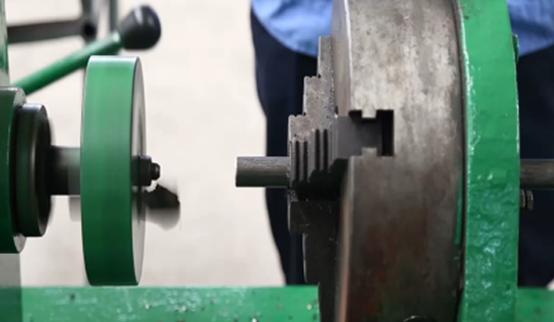 Afrikaans
Afrikaans  Albanian
Albanian  Amharic
Amharic  Arabic
Arabic  Armenian
Armenian  Azerbaijani
Azerbaijani  Basque
Basque  Belarusian
Belarusian  Bengali
Bengali  Bosnian
Bosnian  Bulgarian
Bulgarian  Catalan
Catalan  Cebuano
Cebuano  Corsican
Corsican  Croatian
Croatian  Czech
Czech  Danish
Danish  Dutch
Dutch  English
English  Esperanto
Esperanto  Estonian
Estonian  Finnish
Finnish  French
French  Frisian
Frisian  Galician
Galician  Georgian
Georgian  German
German  Greek
Greek  Gujarati
Gujarati  Haitian Creole
Haitian Creole  hausa
hausa  hawaiian
hawaiian  Hebrew
Hebrew  Hindi
Hindi  Miao
Miao  Hungarian
Hungarian  Icelandic
Icelandic  igbo
igbo  Indonesian
Indonesian  irish
irish  Italian
Italian  Japanese
Japanese  Javanese
Javanese  Kannada
Kannada  kazakh
kazakh  Khmer
Khmer  Rwandese
Rwandese  Korean
Korean  Kurdish
Kurdish  Kyrgyz
Kyrgyz  Lao
Lao  Latin
Latin  Latvian
Latvian  Lithuanian
Lithuanian  Luxembourgish
Luxembourgish  Macedonian
Macedonian  Malgashi
Malgashi  Malay
Malay  Malayalam
Malayalam  Maltese
Maltese  Maori
Maori  Marathi
Marathi  Mongolian
Mongolian  Myanmar
Myanmar  Nepali
Nepali  Norwegian
Norwegian  Norwegian
Norwegian  Occitan
Occitan  Pashto
Pashto  Persian
Persian  Polish
Polish  Portuguese
Portuguese  Punjabi
Punjabi  Romanian
Romanian  Russian
Russian  Samoan
Samoan  Scottish Gaelic
Scottish Gaelic  Serbian
Serbian  Sesotho
Sesotho  Shona
Shona  Sindhi
Sindhi  Sinhala
Sinhala  Slovak
Slovak  Slovenian
Slovenian  Somali
Somali  Spanish
Spanish  Sundanese
Sundanese  Swahili
Swahili  Swedish
Swedish  Tagalog
Tagalog  Tajik
Tajik  Tamil
Tamil  Tatar
Tatar  Telugu
Telugu  Thai
Thai  Turkish
Turkish  Turkmen
Turkmen  Ukrainian
Ukrainian  Urdu
Urdu  Uighur
Uighur  Uzbek
Uzbek  Vietnamese
Vietnamese  Welsh
Welsh  Bantu
Bantu  Yiddish
Yiddish  Yoruba
Yoruba  Zulu
Zulu Understanding the Functionality and Importance of V-Belt Tensioner Pulleys in Engine Performance
Understanding V-Belt Tensioner Pulleys
The V-belt tensioner pulley is an essential component in the operation of various automotive and machinery systems. Its primary function is to maintain proper tension on the V-belt, which is a type of drive belt commonly used to transfer power between engine components, such as the alternator, water pump, and air conditioning compressor. Proper tension is crucial for optimal performance, as it prevents slippage and ensures efficient power transmission.
Design and Functionality
A V-belt tensioner pulley typically consists of a pulley mounted on a spring-loaded arm. This design allows it to adjust automatically to changes in tension as the belt wears or as components move during operation. The spring mechanism ensures that the tension on the belt remains within a specified range, accommodating any fluctuations in belt length due to temperature variations and wear over time. Most tensioners are designed to be part of a serpentine belt system, which consists of a single belt that drives multiple components, making it more efficient and compact than traditional setups.
Importance of Tension
The tension applied to a V-belt is critical for effective performance. If the belt is too loose, it may slip off the pulleys, leading to loss of power and potential damage to both the belt and the driven components. On the other hand, excessive tension can cause wear on the belt and the components it drives, leading to premature failure. An ideal tensioner pulley ensures that the belt maintains optimal tension, balancing performance and longevity.
Common Issues
v belt tensioner pulley

Over time, V-belt tensioner pulleys can experience wear and tear, leading to several common issues. One of the most noticeable symptoms of a failing tensioner is squeaking or squealing noises coming from the engine compartment, which usually indicates that the belt is slipping. Additionally, if the tensioner pulley itself is worn or damaged, it may not maintain proper tension, leading to further belt problems. Other signs of a failing tensioner pulley include fraying or cracking of the belt, reduced performance of the vehicle’s accessories, and visible wear on the pulley itself.
Maintenance and Replacement
Regular maintenance of the V-belt and tensioner pulley system is essential for ensuring long-term reliability and performance. It is advisable to inspect the V-belt and tensioner at regular intervals, especially during routine vehicle maintenance. If any signs of wear, such as cracks or fraying, are observed on the belt, it is important to replace it promptly. Similarly, if the tensioner pulley is exhibiting signs of wear or failing to provide adequate tension, it should be replaced.
When replacing a tensioner pulley, it is vital to ensure that the replacement part matches the specifications of the original equipment. After replacement, the new tensioner should be properly installed with the correct tension settings to ensure optimal performance of the V-belt system.
Conclusion
The V-belt tensioner pulley plays a pivotal role in the automotive and machinery landscape, providing the necessary tension to ensure efficient power transmission and function. Understanding its operation, the importance of proper tension, and the common issues that can arise can help vehicle owners and operators maintain their systems effectively. Regular inspections and timely replacements will not only extend the life of the V-belt system but also contribute to the overall efficiency and performance of the engine or machinery.
-
Revolutionizing Conveyor Reliability with Advanced Rubber Lagging PulleysNewsJul.22,2025
-
Powering Precision and Durability with Expert Manufacturers of Conveyor ComponentsNewsJul.22,2025
-
Optimizing Conveyor Systems with Advanced Conveyor AccessoriesNewsJul.22,2025
-
Maximize Conveyor Efficiency with Quality Conveyor Idler PulleysNewsJul.22,2025
-
Future-Proof Your Conveyor System with High-Performance Polyurethane RollerNewsJul.22,2025
-
Driving Efficiency Forward with Quality Idlers and RollersNewsJul.22,2025





























